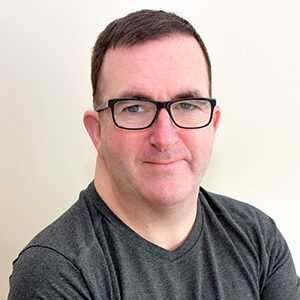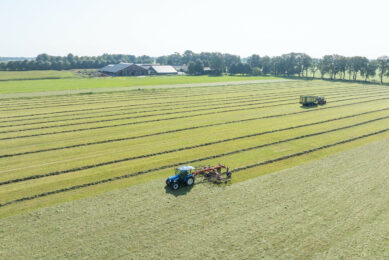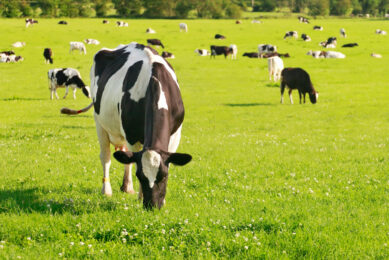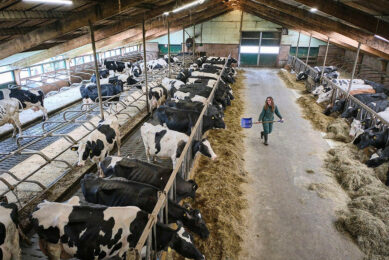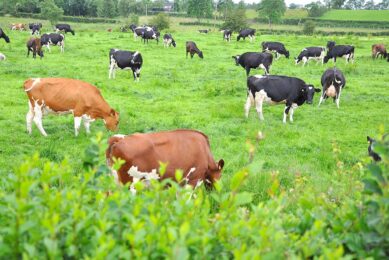Drought: Better not to mow grass under 20cm
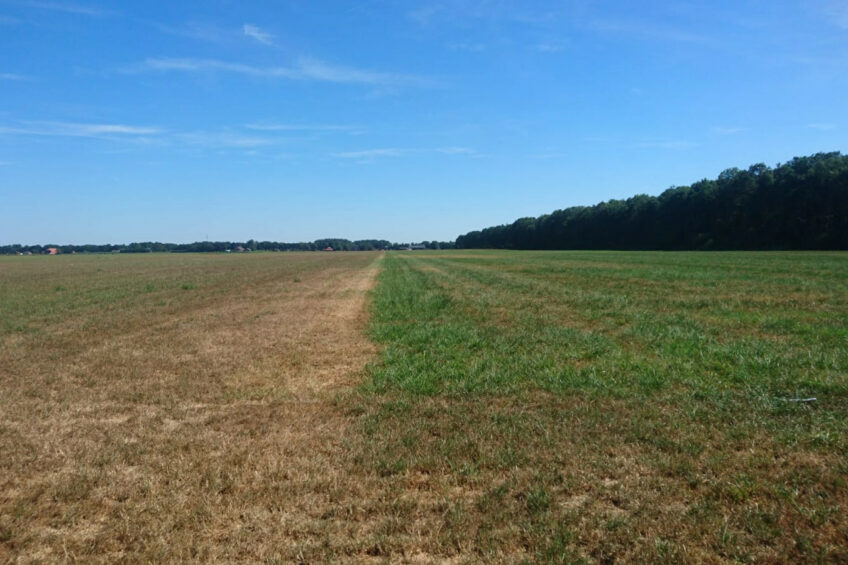
Dairy farmers with grassland affected by the drought have been advised not to mow grass below 20cm in length even if they are running out of forage to feed their livestock.
The drought has hit many farms around the world but it’s the intensive livestock pasture based farmers in Europe that are feeling the effects the hardest. Farmers in the Netherlands, Belgium, Germany, Denmark, Sweden, Finland, Ireland and the UK are struggling to find enough fresh grass to keep their herds grazing. On top of that, as the growing season has been reduced by over one month, ensuring there is enough fodder to feed the cattle and sheep over the winter is another concern. Some farmers have been forced to cut swards earlier than normal just to get some fresh grass to the herd but a grass specialist has advised to try and not mow below 20cms to avoid damaging the grassland.
Also read: Drought hits European dairy farmers
When too short, postpone mowing
Grassland specialist Christiaan Arends from Barenbrug Holland BV has issued some advice to farmers caught up in the drought.
Mr Arends said: “Mowing during drought can cause a lot of damage to grassland. If there is less than 20 centimetres of grass, we advise postponing mowing. After mowing, the grass plant uses its reserves for the creation of new leaves. But in dry periods the grass plant needs these reserves to survive. Moreover, riding the grassland is too much of a burden on the soil and grass.” He further added that grazing grass on an occasional basis during dry periods ensures the recovery of the grassland. “Let the cattle eat the grass remnants during evening hours will benefit the grass. However, keep an eye on the condition of your livestock that is only outside.”

Easy check if grass will recover
Mr Arends says it is easy to check if the grass has survived the dry period. “Cut a piece of 20cm by 20cm of the grass sod and put it into a container of water for 10 minutes. If there are white underground roots or green spots in the crop within a few days, the grassland will recover after the drought. If this is not the case, your grassland will probably not recover. Grassland renewal is then the only option to secure your roughage.” If new plants develop with white feet in the extended sod, be alert. The chance of developing rough-stalked meadow-grass and street grass in your pasture is huge. This can be controlled by regularly weeding and sowing your grassland. Mr Arends: “If your grassland can not be saved anymore, sowing is the only option. For the best result, it is important to first thoroughly make it weed-free. 10 days later you can mill your grassland and sow again. “During a dry period there are external differences between the different types of grass. Poor grasses, such as Poa trivialis, fall out first. Perennial ryegrass has longer roots, but in many locations in the Netherlands we even see perennial ryegrass having a hard time.
“Soft leaf tall fescue is best resistant to drought of all types of grass. This crop has roots up to one metre deep, and produces good quality roughage despite drought,” he said.
Nitrate poisoning
Due to mineralisation and unused fertilisers, there is a lot of nitrogen in the soil during the summer months. This can result in grass with high protein content or too much nitrate. Mr Arends added: “Do not feed your cattle too much. Topping up with cut corn or other feed is the best option. In the dry summer of 1976 many cows died of nitrate poisoning. If reseeding is the best option to ensure new grass growth then it all depends which country the farmer is in as to best sowing times. In some countries we see increased sales already. In other markets farmers are waiting to see what will come back in the pastures. Or they are waiting for enough rain so they can go back and work the land. In Northern Europe the fall season is short so it might take until spring 2019 when they can rejuvenate their pastures.”

Using persistant grasses
According to Mr Arends, reseeding is best in the fall depending on the length of the regular fall season which really depends on where you are in Europe. It makes a difference if you are in Sweden or in the Netherlands. In the Netherlands the fall season is longer so there is more time to establish grasses in the pasture. As soon as you can work the land you can put the seed in the ground. “Shallow rooting weeds are affected as well. As soon as you have new seeds in the ground they can grow as soon as the weather permits it. We have bred soft leave tall fescues for years already and those pastures are doing quite well at the moment. This species had a root system that can go more than one metre in the ground. In dry conditions these types of grasses are performing well. They are very persistent grasses that last long in pastures. So far we have used them for pastures that are going to be mown and not grazed. In the near future those grasses can be grazed as well. We sell these grasses already in many markets and every year we see demand going up. Not only because the drought tolerance, also because of its persistence, high consistent yields and because of its roots it is using fertiliser more efficient.”


